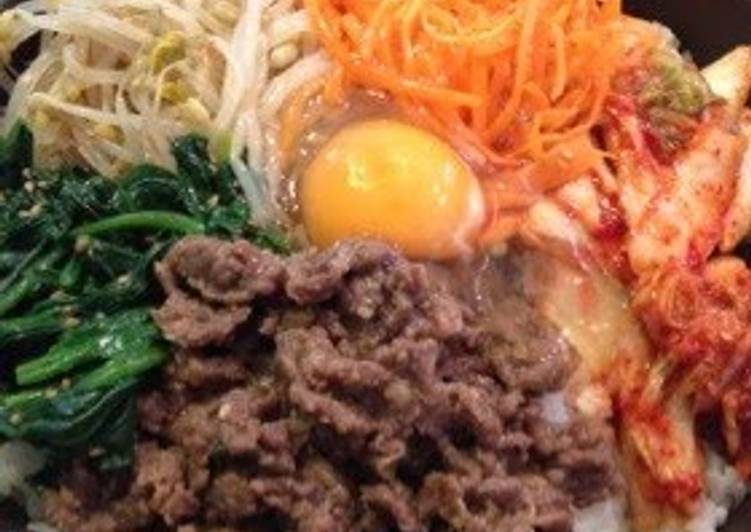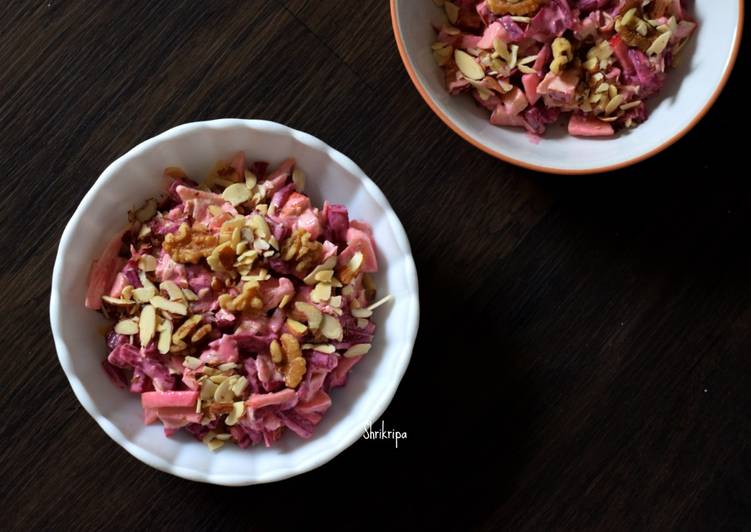
Hello everybody, hope you are having an incredible day today. Today, we’re going to make a special dish, addictive bibimbap made in a frying pan. One of my favorites food recipes. This time, I am going to make it a bit tasty. This will be really delicious.
Variety of components to choose from to prepare bibimbap, from traditional to simply tasty that work well, with detailed instructions and explanations. Great recipe for Addictive Bibimbap Made in a Frying Pan. Dolsot Bibimbap (Korean rice with meat and vegetables in hot stone pot) video and recipe with easy to get ingredients.
Addictive Bibimbap Made in a Frying Pan is one of the most popular of recent trending foods in the world. It is appreciated by millions daily. It’s simple, it is fast, it tastes yummy. Addictive Bibimbap Made in a Frying Pan is something which I have loved my entire life. They are nice and they look fantastic.
To begin with this particular recipe, we must prepare a few components. You can have addictive bibimbap made in a frying pan using 13 ingredients and 13 steps. Here is how you cook that.
The ingredients needed to make Addictive Bibimbap Made in a Frying Pan:
- Make ready 3 rice bowl's worth Hot cooked white rice
- Take 1 bag Bean sprouts
- Make ready 1/2 bunch Spinach
- Get 1/2 Carrot
- Prepare 1 dash less than 1 rice bowlful Kimchi
- Get 200 grams Meat
- Prepare 1 Sesame oil
- Get 1 Sesame seeds
- Make ready 1 Egg
- Get 1 Doubanjiang
- Take 8 tbsp Yakiniku sauce (store-bought)
- Get 5 sheets Korean nori seaweed
- Make ready 2 tsp Chinese soup stock
Pan-fry the vegetables on a medium heat. We want them to sweat and get soft, but not charred! The bright colors is part of the visual. Bibimbap—a Korean rice bowl—combines the classic flavors of Korean cuisine with wholesome, nutritious veggies.
Steps to make Addictive Bibimbap Made in a Frying Pan:
- First, make the namul: Blanch the bean sprouts.
- Drain the blanched bean sprouts, put them in a bowl, and mix in 1 teaspoon of Chinese soup stock, 1 tablespoon of sesame oil, and 1 tablespoon of sesame seeds.
- Julienne the carrot, sprinkle on a 1 scant teaspoon of salt, mix, and set aside until the moisture comes out.
- Once the carrot is wilted, squeeze out the excess moisture, and mix in 1 tablespoon of sesame seeds, and 1 tablespoon of sesame oil.
- Boil the spinach, cut into bite-sized pieces, mix in 1 teaspoon of Chinese soup stock, 1 tablespoon of sesame oil, and 1 tablespoon of sesame seeds.
- Cook the meat halfway, pour in the yakiniku sauce, and cook through the meat. You could use ground meat instead.
- Heat a frying pan and pour in plenty of sesame oil (about 5 tablespoons).
- Once the frying pan is hot enough, add the rice. You should be able to hear the rice crackle and pop.
- Place each vegetable namul, kimchi and the meat on top, crack open 1 egg in the middle, and squeeze out about 1/2 teaspoon of doubanjiang to the side of the egg.
- Heat over medium to high heat without touching the frying pan. Flip over the rice from time to time to check to see if the rice is browned enough as shown in the photo.
- Sprinkle on Korean nori seaweed torn into small pieces, drizzle on the yakiniku sauce, and let it continue to cook briefly.
- Once the rice is browned and crispy, mix it all together.
- Done!
Bibimbap is the perfect dish to prepare when you have a wide variety of leftover vegetables in the fridge, and tofu – like the pan-fried version in the recipe above – is a The many ingredients mean you'll get unique flavor and texture combinations in every bite. What more could you want in a bowl? Bibimbap (BEE-bim-bap) is a bowl of warm white rice topped with an assortment of sauteéd and seasoned vegetables, gochujang (or other chili pepper For example, the addition of kimchi. Kimchi is not something one would typically see tossed in a Bibimbap bowl. Therefore, Yangpun Bibimbap literally means Bibimbap served in a Yangpun bowl.
So that’s going to wrap this up for this special food addictive bibimbap made in a frying pan recipe. Thank you very much for your time. I am confident you will make this at home. There’s gonna be more interesting food in home recipes coming up. Remember to bookmark this page in your browser, and share it to your family, friends and colleague. Thank you for reading. Go on get cooking!


